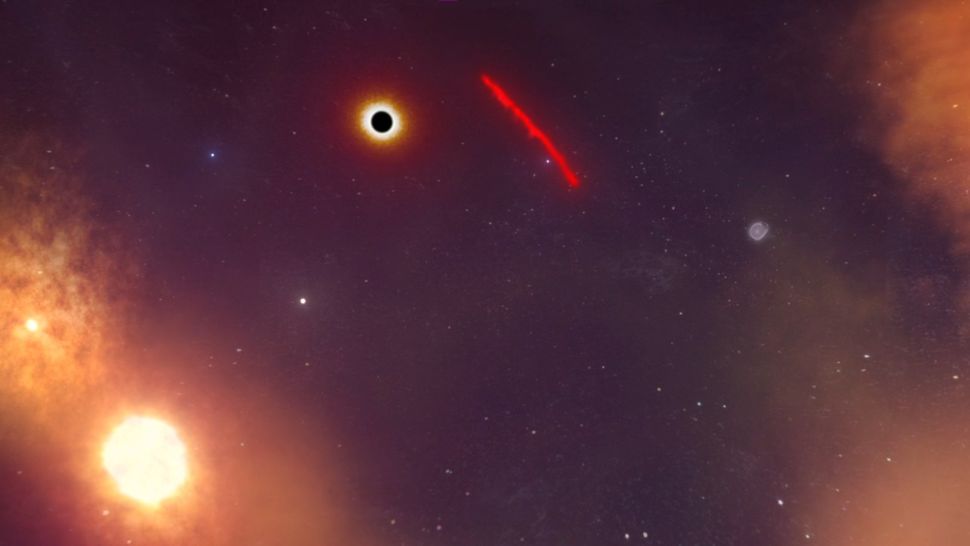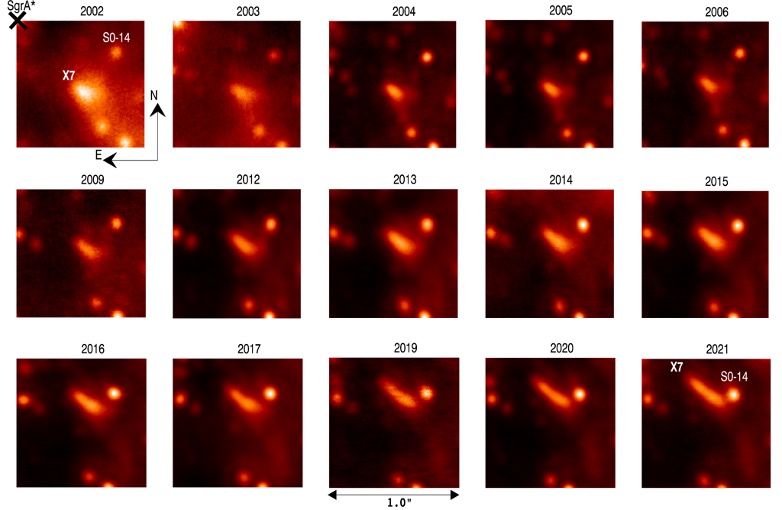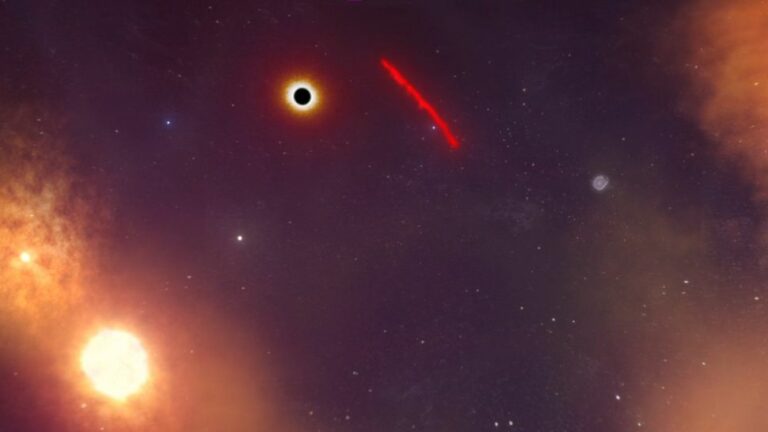A mysterious dust cloud is being destroyed by the monstrous black hole at the center of the Milky Way
A dust filament 3,000 times as long as the sun-Earth distance is being destroyed by the Milky Way’s black hole in front of astronomers’ eyes.
As astronomers watch in real-time, the enigmatic dust cloud named X7, which weighs as much as 50 Earths, is being ripped apart by the supermassive black hole residing in the heart of the Milky Way galaxy, known as Sagittarius A*. Using one of the most influential telescopes on the planet, the W. M. Keck Observatory situated on Mauna Kea in Hawaiʻi, scientists have been tracking the cloud’s path for two decades. Through these observations, they have discovered that the cloud has extended itself into a filament of up to 3,000 times the distance between the Sun and Earth as it spirals around the black hole.
New insights into the effects of the powerful gravitational forces exerted by Sagittarius A* on its surrounding environment have emerged from the observation campaign initiated in 2002.

“This is a unique chance at observing the effects of the black hole’s tidal forces at high-resolution, giving us insight into the physics of the galactic center’s extreme environment,” Anna Ciurlo, assistant researcher at the University of California, Los Angeles, and lead author of the study, said in a statement .
Utilizing the NIRC2 instrument on Keck, which provides a view of the universe through heat-emitting near-infrared light, the same wavelength of light that the James Webb Space Telescope of NASA specializes in, astronomers studied X7. Because infrared light can permeate dust, the researchers were able to closely observe the movements of the filament. Their findings revealed that the filament takes approximately 170 years to orbit the galactic center and that it will make its closest approach to the black hole in 2036, after which the cloud will dissipate entirely.
“It’s exciting to see significant changes of X7’s shape and dynamics in such great detail over a relatively short time scale as the gravitational forces of the supermassive black hole at the center of the Milky Way influences this object,” Randy Campbell, science operations lead at Keck Observatory and co-author of the study, said in the statement.

Upon the destruction of the filament, its components will be consumed by the black hole, and scientists believe that this event could result in a spectacle of “fireworks” as the dust particles accelerate and heat up before crossing the event horizon. Although the researchers have made a fairly accurate prediction about the filament’s fate, its origin remains largely unknown. One possible explanation is that the cloud originated from the merger of two stars that expelled a shell of gas and dust that enveloped them during the process.
“One possibility is that X7’s gas and dust were ejected at the moment when two stars merged,” Ciurlo said. “In this process, the merged star is hidden inside a shell of dust and gas and the ejected gas perhaps produced X7-like objects.”
Among a collection of filaments that encircle the black hole in the center of the Milky Way, known as the G objects, X7 is one such filament. These filaments exhibit high orbital velocities of up to 490 miles per second (790 kilometers per second) in the vicinity of the black hole. Thus, knowledge gained from observing X7 can assist astronomers in forecasting the trajectory of its fellow filaments. With over a decade of existence left, astronomers will continue to track X7’s movement as it approaches its ultimate demise.
The study was published on Wednesday (Feb. 22) in the Astrophysical Journal.
Do not forget to share your opinion with us to provide you with the best posts !




0 Comments